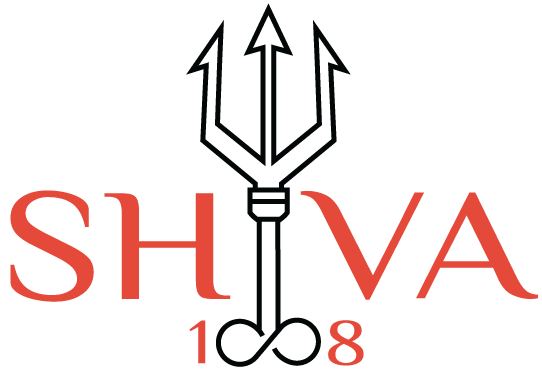The term “Bhava Rudra” refers to one of the various aspects or manifestations of Lord Shiva. Each of these manifestations represents different attributes, energies, or roles that Lord Shiva undertakes for the well-being of the universe. While the term “Bhava Rudra Avatar” is not explicitly mentioned in mainstream Hindu scriptures, the concept of Bhava Rudra is associated with the intense and compassionate aspect of Lord Shiva.
![]()
Lord Shiva is often depicted as having various forms and performing diverse roles, reflecting the multifaceted nature of the divine. The term “Bhava” can be translated to mean “feeling,” “emotion,” or “existence,” and it is often used to describe the deep, contemplative, and emotional states associated with Lord Shiva.
In the traditional Shiva Puranas and scriptures, Rudra is a significant name for Lord Shiva. Rudra embodies the fierce and destructive aspect of Shiva, responsible for dissolution and transformation. The term “Bhava Rudra” suggests the compassionate and merciful aspect of Lord Shiva, indicating his role as the alleviator of suffering and the embodiment of divine love.
Devotees often invoke Bhava Rudra for blessings related to emotional well-being, compassion, and spiritual growth. The worship of Bhava Rudra is a way for devotees to connect with the tender and nurturing qualities of Lord Shiva, seeking solace and guidance in times of distress.
While there might not be a specific “Bhava Rudra Avatar” as commonly understood in the context of other avatars like Rama or Krishna, the concept of Bhava Rudra underscores the dynamic and multifaceted nature of Lord Shiva’s divine presence. Devotees may resonate with different aspects of Lord Shiva based on their spiritual inclinations and personal experiences.
Bhava– ॐ भवोद् भव संभवाय इष्ट दर्शन हेतवे ॐ सं ॐ नमः
‘OM Bhavod Bhava Sambhavaya Ista Darshana Hetave OM Sam OM Namaha
Table of Content
Avatar Info
The term “Bhava Rudra” does indeed have significance in Hindu mythology, particularly in the context of Lord Shiva.
Bhava Rudra Avatar:
“Bhava Rudra” is one of the forms or manifestations of Lord Shiva. The term “Bhava” signifies the divine mood or emotion, and “Rudra” is one of the names of Lord Shiva, often associated with his fierce and destructive aspect. In the Bhava Rudra form, Shiva embodies the intense and wrathful mood that symbolizes the destructive forces in the universe.
Attributes of Bhava Rudra:
Fierce Aspect: Bhava Rudra is depicted as a fierce and formidable form of Lord Shiva, highlighting the destructive and transformative nature of the divine.
Destruction for Regeneration: The destructive aspect of Bhava Rudra is not merely for annihilation but for the regeneration and renewal of cosmic energies. It represents the cyclical nature of creation, preservation, and destruction.
Associated with Rudra Tandava: Bhava Rudra is often linked with the Rudra Tandava, the cosmic dance of Shiva, where he performs a dynamic and vigorous dance symbolizing the rhythmic cycles of the universe.
Symbolism of Rudraksha: Bhava Rudra is often depicted adorned with Rudraksha beads, which are considered sacred and symbolize the tears of compassion shed by Shiva for the welfare of humanity.
The specific details and depictions of Bhava Rudra can vary across different texts, traditions, and artistic representations. Devotees who follow the worship of Lord Shiva may seek blessings from Bhava Rudra for spiritual transformation, destruction of negative tendencies, and the renewal of life forces.
It’s important to note that while Bhava Rudra is a recognized aspect of Lord Shiva in some traditions, it may not be as widely emphasized or described in mainstream Hindu scriptures as some other forms of Shiva.
Incarnation
The term “Bhava Rudra” is often used to refer to a specific form or manifestation of Lord Shiva. In the Shaiva tradition, Lord Shiva is worshiped in various forms, each representing different aspects of his divine nature and cosmic responsibilities. The term “Bhava Rudra” is derived from two key components: “Bhava,” meaning the state of being or existence, and “Rudra,” which is one of the names of Lord Shiva associated with his fierce and destructive aspect.
While specific details about the “Bhava Rudra” incarnation may vary across different texts and traditions, the essence generally revolves around Lord Shiva’s role as the cosmic annihilator and regenerator. In this form, Shiva embodies the intense and transformative power of destruction, paving the way for regeneration and renewal in the cosmic cycle.
In various Puranas and texts, Lord Shiva is described as performing the cosmic dance of destruction and creation, known as the “Tandava.” This dance symbolizes the eternal cycles of creation, preservation, and dissolution, with Shiva as the supreme force overseeing these cosmic phenomena. The “Bhava Rudra” aspect encapsulates the intense and fierce nature of Shiva during this cosmic dance.
Devotees who worship Bhava Rudra often seek blessings for inner transformation, spiritual growth, and the removal of obstacles. The worship may involve rituals, prayers, and meditation to connect with the divine energy represented by this particular form of Lord Shiva.
It’s essential to note that interpretations of Lord Shiva’s forms and manifestations can vary, and different texts and traditions may highlight specific attributes or stories associated with Bhava Rudra. For a more comprehensive understanding, consulting specific scriptures, sect-specific texts, or seeking guidance from knowledgeable individuals within the tradition is recommended.
Place of Avatar
In Hindu religion, there are many avatars of Lord Shiva, one of which is Bhava Rudra avatar. Bhava Rudra is mentioned in Veda, in which Shiva is personified in the form of Bhava Rudra.
Description of Bhava Rudra avatar is found in Vedic texts, such as Rigveda, Yajurveda, Atharvaveda, etc. Rudra means “the roarer” or “the howler,” which refers to his fierce and fearful nature. Bhava Rudra avatar, who is also seen in the form of Rudra, shows his fierce, fierce, and destructive nature.
The stories of Shiva’s various avatars and forms are found in the Puranas, which describe his actions, teachings and achievements. Bhava Rudra avatar represents a form of Shiva whose authority is fierce and fierce.

